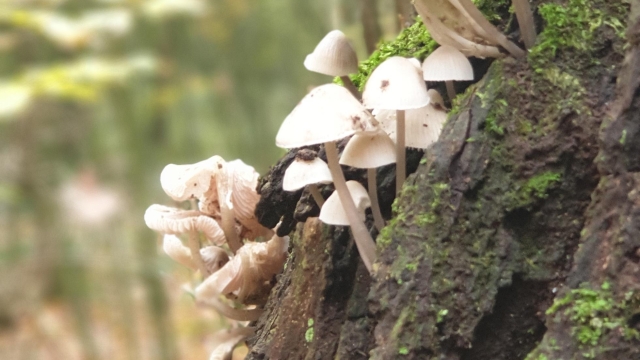
Mushroom growing has long fascinated both botanists and culinary enthusiasts alike. From their humble beginnings as spores, mushrooms possess a mysterious allure, captivating us with their unique shapes, earthy aromas, and umami flavors. With a rich history steeped in ancient traditions, mushroom cultivation has evolved into a science, empowering individuals to unlock the secrets of these fascinating fungi.
As the world becomes increasingly aware of the nutritional and medicinal benefits of mushrooms, the interest in growing them at home has surged. Whether you are a novice enthusiast or an experienced gardener, the art of mushroom cultivation offers a rewarding and immersive experience. Through careful understanding of their life cycle and precise environmental conditions, you too can embark on a journey from spores to shrooms, witnessing the fascinating transformation of these fungic wonders.
In this article, we will delve into the foundations of mushroom cultivation, guiding you through the essentials of creating a conducive environment, selecting the right mushroom variety, and ensuring successful growth. From the initial stages of inoculation to the final harvest, we will unravel the intricacies of each step, empowering you with knowledge and techniques that will elevate your mushroom growing endeavors to new heights.
Embark on this wondrous journey with us as we unveil the secrets of mushroom cultivation, empowering you to nurture and harvest your own bounty of delicious and nutritious fungi. Let’s dive into the world of mushroom growing and discover the delights that await us in this captivating realm of nature.
Choosing the Right Mushroom Variety
When it comes to mushroom growing, one of the most important decisions you’ll make is choosing the right mushroom variety. With a wide array of mushroom species to choose from, each with its unique flavor, texture, and growing requirements, selecting the perfect variety is crucial for a successful cultivation journey.
Different mushroom varieties have distinct growth habits and preferences, so it’s essential to consider factors such as temperature, humidity, and substrate compatibility when making your choice. Some popular options for beginners include the versatile oyster mushroom, which thrives in a range of conditions and is known for its delicate texture and mild, nutty flavor.
If you’re looking for a mushroom variety that is easy to grow and yields a bountiful harvest, the shiitake mushroom could be an excellent choice. With its earthy and robust flavor, shiitake mushrooms are highly sought after in culinary circles. They prefer a slightly cooler environment and often grow best on hardwood logs or sawdust-based substrates.
For those seeking an adventurous and visually striking mushroom variety, Lion’s Mane mushrooms might be the perfect fit. Known for their cascading white tendrils, resembling a lion’s mane, these mushrooms have a subtle seafood-like flavor and can be grown on a variety of substrates, including sawdust, straw, or even coffee grounds.
Remember, the selection of the right mushroom variety lays the foundation for a successful cultivation journey. Consider your preferences, growing conditions, and desired flavors when making your choice, and get ready to embark on a fascinating adventure into the world of mushroom growing.
Creating the Ideal Growing Environment
To successfully cultivate mushrooms, creating the ideal growing environment is essential. The growth of mushrooms heavily relies on specific environmental conditions, which can significantly impact their development and overall yield.
First and foremost, maintaining the right temperature is crucial. Different types of mushrooms have varying temperature requirements, so it is essential to understand the needs of the specific variety you are growing. Generally, most mushrooms thrive in temperatures ranging from 60°F to 75°F (15°C to 24°C). Consistently monitoring and regulating the temperature within this range is crucial for optimal growth.
Next, mushrooms require a high level of humidity to flourish. Adequate moisture in the growing environment is essential for the mushrooms to develop properly. One way to ensure this is by creating a humid chamber or using a misting system to keep the air moisture level high. Maintaining a humidity level of around 90% is recommended for successful mushroom cultivation.
Proper ventilation is also key for mushroom growth. While mushrooms thrive in a humid environment, excessive moisture can lead to issues such as mold or bacterial contamination. Good air circulation helps prevent such problems. Installing fans or using natural airflow methods can ensure the exchange of air within the growing area, reducing the risk of unwanted fungal or bacterial growth.
By establishing and maintaining the ideal growing environment with the right temperature, humidity, and ventilation, you can significantly enhance the success of your mushroom cultivation venture. Creating these optimal conditions offers the mushrooms the best opportunity to grow and thrive, ultimately leading to a bountiful harvest.
Harvesting and Preserving Mushrooms
In mushroom growing, the culmination of your efforts is the moment when you can finally harvest and enjoy the fruits of your labor. Harvesting mushrooms at the right time is crucial for optimal flavor and texture. Once you’ve determined that your mushrooms are ready to be picked, it’s time to embark on this rewarding step.
When it comes to harvesting mushrooms, it’s best to use a sharp knife or scissors to carefully cut them at the base of the stem. Avoid pulling or twisting the mushrooms, as this can damage the mycelium and potentially affect future growth. Gently lift the mushroom from the growing substrate and place it in a clean basket or container.
To ensure the quality and longevity of your harvested mushrooms, it’s essential to handle them with care. Mushrooms are delicate and can bruise easily, so it’s important to avoid rough handling. Place them gently in a single layer to prevent them from getting squished or damaged.
Preserving mushrooms properly is essential to extend their shelf life. One effective method is to store them in a paper bag or a breathable container. Avoid using plastic bags or airtight containers, as mushrooms need some airflow to prevent moisture buildup and potential spoilage. Remember to keep the stored mushrooms in a cool and dark place, such as the refrigerator, to maintain their freshness.
With these simple techniques, you can confidently harvest and preserve your homegrown mushrooms, ensuring that you can savor their unique flavors for a longer period. Enjoy the satisfaction of cultivating your own fungi and discovering the wonders of mushroom growing.
